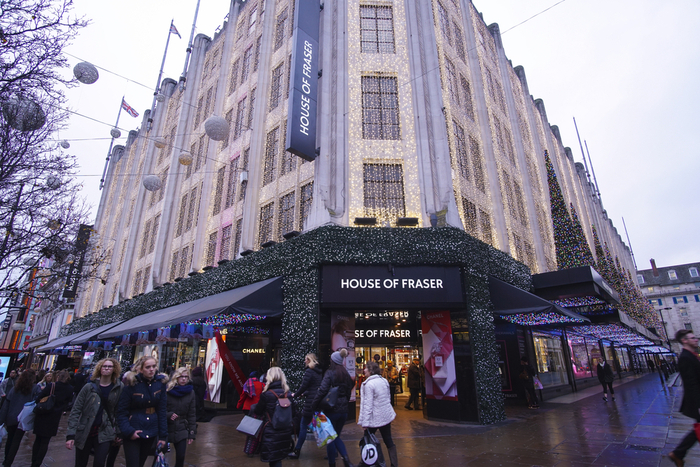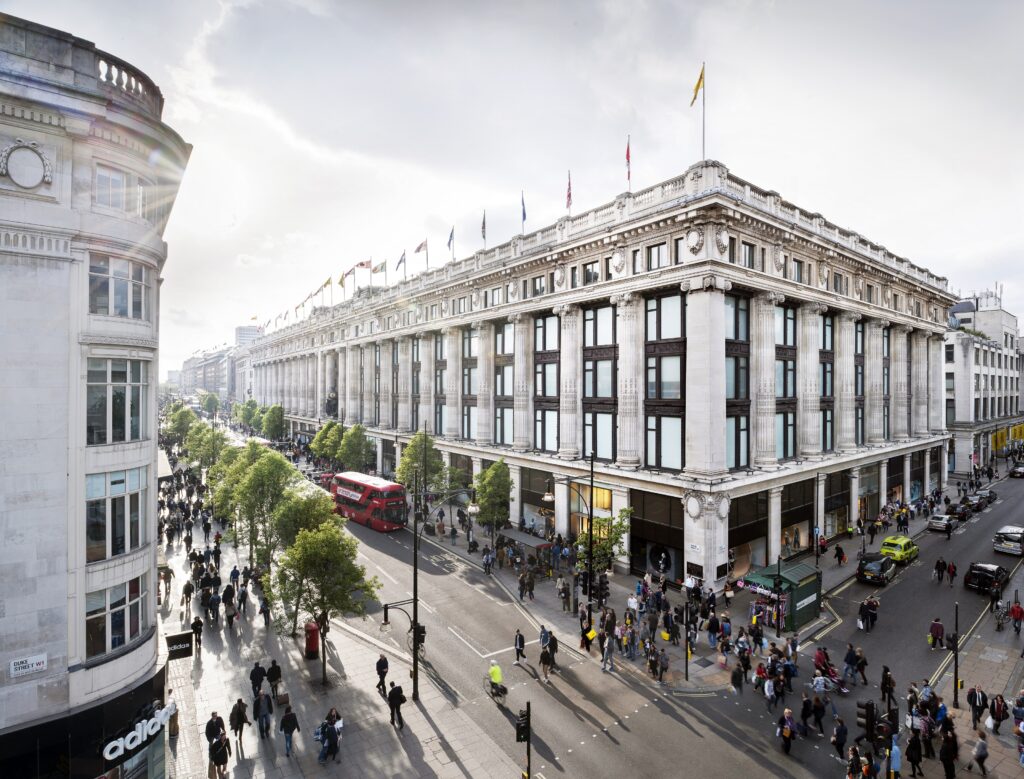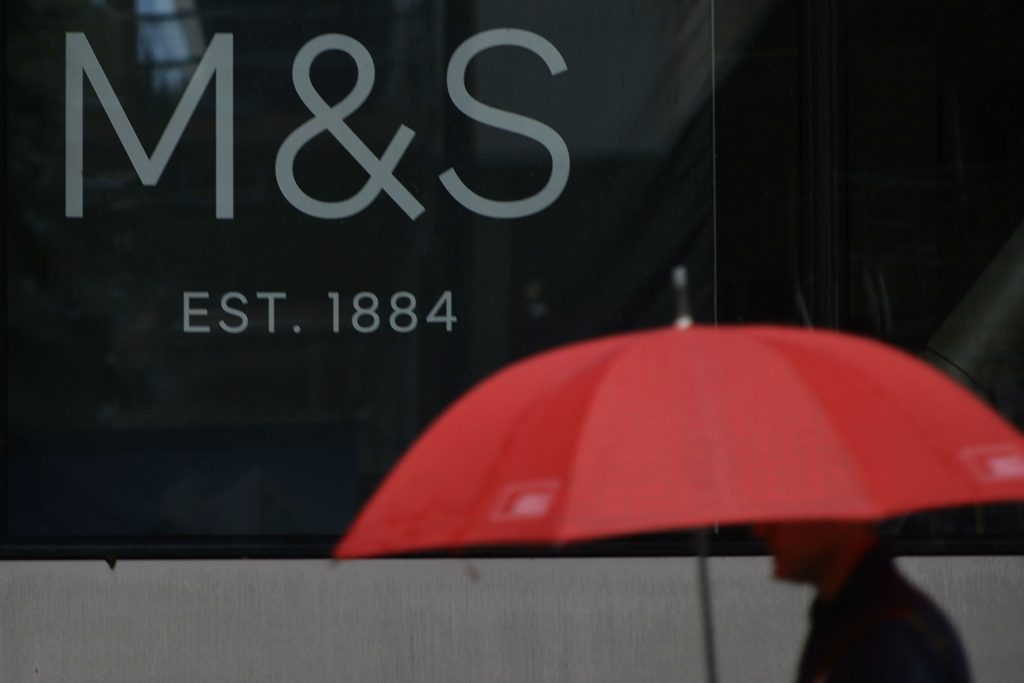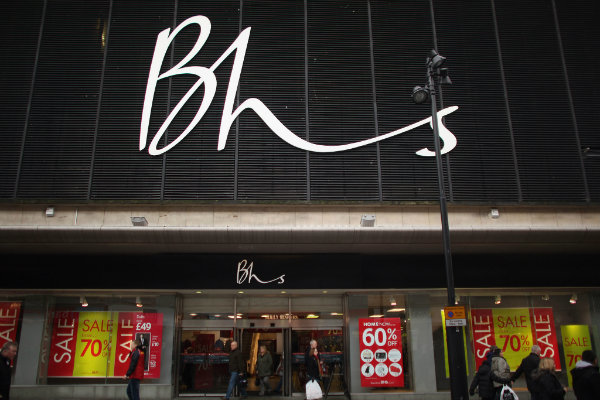A week after reporting that its London flagship store will be revamped with £100 million investment, House of Fraser surprised the retail sector by announcing that it has been evicted from Oxford Street.
Frasers Group confirmed on Wednesday that the flagship store on London’s Oxford Street is set to permanently close.
Since billionaire owner Mike Ashley acquired the department store chain in 2018, the business has “worked collaboratively with the landlord to keep the store trading”.
But the House of Fraser store will now close in January next year.
Frasers Group said the store has been trading “three years longer than what was initially proposed by the previous owner”.
It is continuing to “invest significantly into the British high street” and has requested an urgent review of the current “archaic business rates”.
The group said if business rates were reviewed, it would support the future of House of Fraser – otherwise further store closures are inevitable.

This news about House of Fraser’s Oxford Street eviction is likely to raise some doubt around the continued existence of some or all the remaining 41 House of Fraser stores across the UK.
The UK retail sector has been asking the government to review business rates for years, and although these were suspended through lockdown and chancellor Rishi Sunak announced some additional ongoing support in the recent Budget, it arguably didn’t address the medium or long-term problem.
“Since their threat to close down a number of stores previously and effectively holding landlords to ransom, House of Fraser seem to have never truly recovered,” Business turnaround specialist Neil Debenham said.
“Their stores are drab, staff levels are low and service is terrible. Their online presence and service is even worse with charging customers to click-and-collect and then giving them a voucher to spend in store in compensation for the click-and-collect charge,” he argued.
“Coupled with difficulties in returning items, it’s no wonder they are closing their flagship store and I would suspect many more to follow.”
Debenham added that House of Fraser failed to adapt to consumer demands for both an in-store and online consumer experience and are subsequently paying the price.
However, he assured that the closure of House of Fraser’s London flagship does not put other department stores at threat, emphasising that the key message here is to change and adapt.
“In a small city or town, the loss of a store such as House of Fraser would have an impact to the local town centre, but people will not stop shopping on Oxford street because House of Fraser is no longer there,” Debenham told Retail Gazette.
“Other department stores will simply absorb the footfall and welcome the extra traffic.”

Catherine Erdly, founder of The Resilient Retail Club, agreed with Debenham.
“It’s an indication of the changing ways that we shop. More and more we are seeing that customers want to shop from businesses that share their ethics and values, and often big businesses struggle to make that connection,” she said.
“The House of Fraser store was part of an iconic run of department stores on Oxford Street. With the Debenhams store remaining a boarded-up shell, with House of Fraser going too, it will create a real gap on this key shopping street.
“This does beg the question as to whether the John Lewis department store just a few doors down will be hit also with falling footfall.”
John Lewis Partnership recently said it would convert much of its previous square footage to housing and offices in an effort to reduce unwanted retail space.
Retailers will likely undertake a complete redefinition of what square footage is now required for them to survive in a space such as Oxford Street.
James Pow, senior retail advisor at business advisory firm Quantuma, said that for those retailers that choose to stay on Oxford Street, there are multiple factors to address in order to avoid closure, including redefining what future revenues will be compared to 2019 and what footfall will return.
“While the sector has witnessed over 83 per cent closure of department stores through the pandemic, this position will undoubtedly worsen over the Christmas period into January with further closures,” he argued.
“Mike Ashley has used the pandemic to shrewdly renegotiate his portfolio of high street stores to either acceptable turnover related rent deals or if not achievable closures.”
“The House of Fraser store was part of an iconic run of department stores on Oxford Street”
Central London has undoubtedly been affected particularly badly by the impact of Covid-19, in particular the lack of commuters coming into the city to work as well as the absence of international tourists.
The retail sector was already going through a transformation before the pandemic struck, with Brits slowly shifting online and retailers shuttering swathes of stores to reflect this trend.
Retail expert Nelson Blackley told Retail Gazette that House of Fraser’s store closure marks another move in the shift along Oxford Street from relying entirely upon retail to more mixed purpose use.
“Marks & Spencer and John Lewis have both previously announced they are seeking planning permission to turn part of their Oxford Street stores into offices,” he said.
“House of Fraser are being forced to exit as their landlords have already gained permission to redevelop the site into six floors of offices with retail on the ground floor, a pool and gym in the basement, and a rooftop restaurant, which presumably the landlords think will generate a more reliable source of future rental income than retail.”
Matt Andrew, managing director of data science company Ekimetrics, argued that House of Fraser, like it’s former Oxford Street neighbour Topshop, has struggled to adapt to changing consumer behaviour and a competitive retail environment.
“Despite being brought out from administration in 2018, House of Fraser has not been able to respond quickly enough to the challenges of the last couple of years,” he said.
“Beyond monitoring footfall and shopping preferences, department stores need to consider the purpose of their retail space and how it can be used to deliver the kind of experience you can only have in person.
“For younger audiences, the likes of Boohoo and ASOS entered the market with fresh investment in CX programs, agile websites, fast delivery and open returns policies.
Meanwhile, House of Fraser has struggled with a large portfolio of large stores with long leases, and has found it difficult to find a USP that resonates with customers.”
Click here to sign up to Retail Gazette‘s free daily email newsletter


















